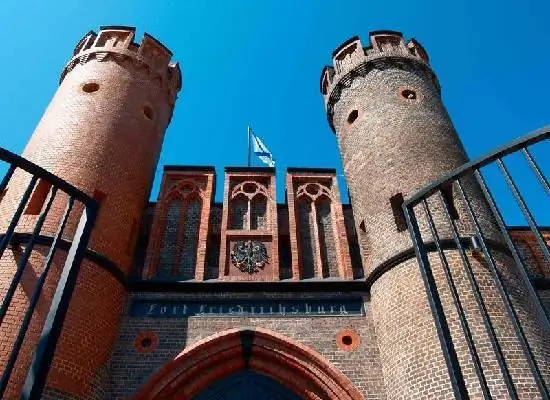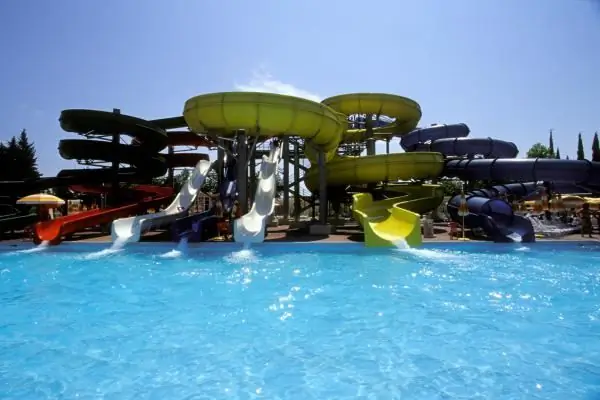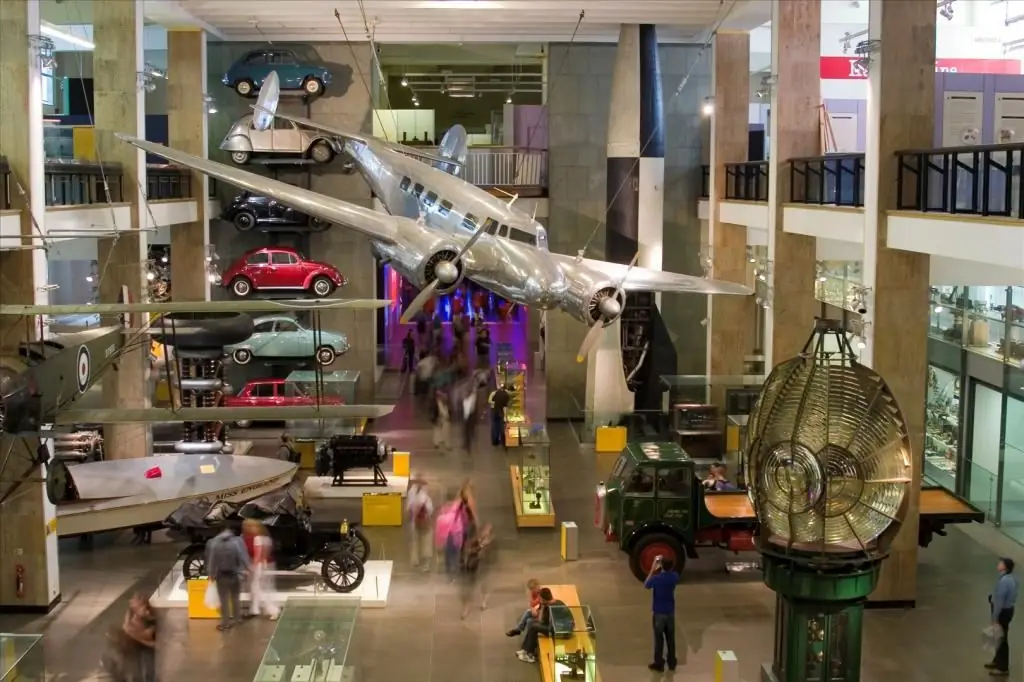- Author Harold Hamphrey [email protected].
- Public 2023-12-17 10:06.
- Last modified 2025-01-24 11:10.
A UNESCO World Heritage Site, an amazingly beautiful architectural ensemble built in the best traditions of the South German Baroque of the first half of the eighteenth century, is the Würzburg residence. This is a picturesque palace, which was created by the best architects of that time. And it is not for nothing that it proudly bears the title of a masterpiece of European architecture.
History of the attraction

The initiator of the construction was Archbishop Johann Philipp Franz von Schönborn, who at the beginning of the 18th century decided that the palace standing on the site of the modern residence was a bit small. However, this thought huddled in his heart for 15 years. Only after this time did the archbishop get the opportunity to build his masterpiece brainchild, having won money in a lawsuit. In the same 1719, the construction of the Würzburg residence began.
The planning of the architectural structure and its construction lay on the shouldersrenowned architect Johann B althasar Neumann. It was he who led the process. The residence would later be called Neumann's life project. No less eminent architects from different countries were subordinate to the maestro. For example, Maximilian von Welsch, Germain Boffrand, Robert de Cotes and Johann Lucas von Hildebrandt. The Italian Rococo artist Giovanni Battista Tiepolo and his eldest son Domenico also took part in the work. They designed the frescoes on the ceiling of the Imperial Hall and the ceiling above the central staircase.
The construction of the Würzburg residence lasted more than half a century. The customer, Archbishop von Schönborn, died in 1724 without waiting for his dream to come true. Therefore, two more church ministers were involved in the organization of construction and interior design. By the way, the interior decoration took no less effort than the construction of the building.
The residence was finally built in 1780. In March 1945, already at the end of World War II, the building was seriously damaged due to bombing. Several halls were lost, but the main ones - the Imperial and the White - fortunately, turned out to be practically untouched. Restoration began only in 1960. It lasted a little less than half a century, almost as long as the palace was being built. But during this time it was possible to restore the original interior of the halls. The doors of the main palace of Würzburg opened in 2006.
Description of the Würzburg residence

Majestic on the outside and exquisite on the inside -that's what you can say about the palace. It's hard to believe, but inside the residence there are about 400 (!!!) halls and rooms. True, only 42 of them are open to tourists.
Deserves special attention to the ceiling above the central staircase, which was painted by the already mentioned Giovanni and his son. The frescoes fascinate with their magnificence. The Imperial Hall strikes with grandeur combined with light tenderness. Here the ceiling is also decorated with a fresco by Giovanni. It depicts the history of Würzburg, one of the oldest Bavarian cities. Tourists also have the opportunity to visit the Small Study, the Green and White Halls, where you can see the graceful lines of stucco, colored marble, huge mirrors, luxurious reliefs and gilding.

But the attraction begins to fascinate even at the entrance, when people see the Hofgarten palace garden surrounding the residence. The Court of Honor is also located here - its visiting card.
Interesting facts about the attraction
It is known that Napoleon himself visited the Wurzburg residence (Würzburg), and three times. Twice he came with his second wife, Marie-Louise of Austria, who was the niece of the Grand Duke of Würbzburg, Ferdinand III. And in 1821, Luitpold, Prince Regent of Bavaria, was born within the walls of the residence. He ruled from 1886 to 1912. At one time, Luitpold took care of the aesthetic component of the palace: he invented decorations and followed it in every possible way.
On his own initiative in 1894, directly opposite the entrance to the residencethe Franconian Fountain was opened.
The site was inscribed on the UNESCO World Heritage List in 1981. The residence of the oldest Bavarian city can safely be considered one of the most beautiful and important cultural attractions in Germany.
Excursions in the Würzburg Residence

You can walk around the territory of the chic palace any day. From November to March, the doors of the residence are open from 10:00 to 16:30. From April to October, you can admire the picturesque halls of the architectural object from 9 am to 6 pm. Children and youth under the age of 18 are admitted free of charge. For adults, a ticket costs about 8 euros (615 rubles). One small note: you can visit the walls of the main residence of Würzburg only as part of an excursion group.
What interesting things can be seen in the residence?

Firstly, being in the Würzburg Palace, you should definitely pay attention to the fresco in the Imperial Hall and above the central staircase. She will make a lasting impression.

Secondly, the size of Neumann's Würzburg residence will make you gasp. It's incredibly big. Thirdly, tourists will remember the palace park surrounding the residence. You can also visit the court church located on its territory.
What do tourists advise? Traveler Reviews

Of course, tourists are sure to recommend visiting thisSight. About what it is so attractive, it is no longer worth talking about. All the exceptional features of this architectural structure have been described above, and this is quite enough. As part of an excursion group, you can enjoy the peace and tranquility of nature in a charming park, decorated with a mass of decorative objects, and the architectural grandeur of the interior of the palace. By the way, in order to have more opportunities to pay attention to the smallest details and take beautiful photos, it is recommended to come to the Würzburg residence outside the tourist season. For example, in winter or early spring.
How to get to the Wurzburg landmark?

The city is located in the South of Germany, on the federal state of Bavaria, and stands on the Main River. You can travel from Munich to Würzburg by train from the main railway station. Travel time is approximately 2 hours.
The residence is located at: Residenzplatz 2, 97070 Würzburg. It stands on a spacious square, 900 meters from the Würzburg railway station. You can get there by buses number 2, 6, 9, 12, 14, 16, 20, as well as by trolleybuses 1, 3 and 5.
The Wurzburg residence in Germany is a uniquely beautiful, majestic, excellent, charming object. And the town itself will be remembered by tourists from the positive side, since the Bavarians - and this is not a secret - are very pleasant and kind people. After visiting the main palace of the city, you can take a walk to other places. There are also budget and luxury hotels here, so you can stay longer in Würzburg,by renting a room in one of them.






